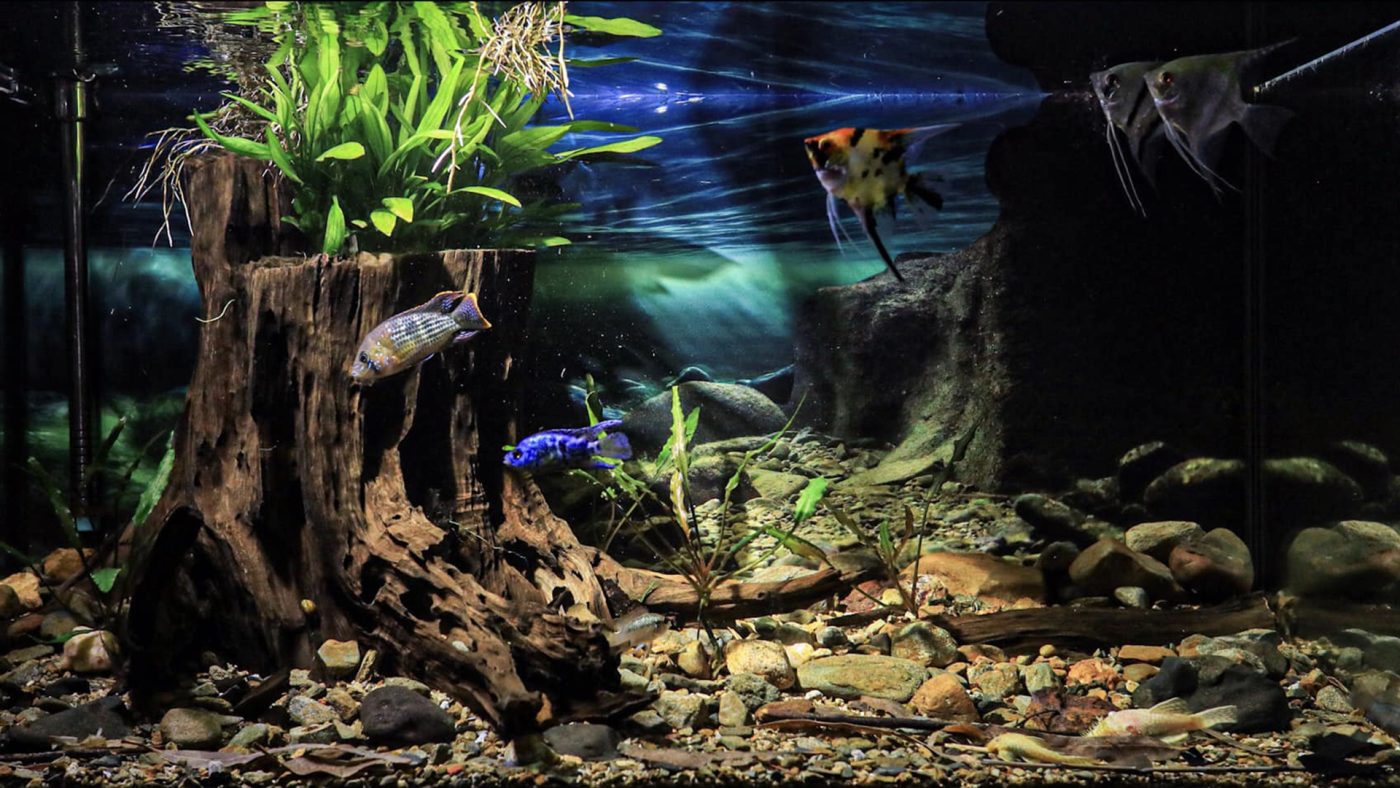Blogs
Biotope aquarium: a guide to creating a naturalistic ecosystem
A biotope aquarium offers a one-of-a-kind glimpse into the natural world by replicating a specific aquatic habitat. Unlike conventional aquariums that often contain a mix of species without much regard to their native environments, a biotope aquarium aims to recreate the precise conditions of a particular geographic region, stream, lake, or river. Imagine peering into a miniature Amazon River or an African Rift Lake right in your living room. The concept is not just about aesthetics but also about creating a balanced and thriving ecosystem that mimics nature as closely as possible.
Setting up a biotope aquarium requires a deep understanding of the natural habitat you are trying to replicate. From water parameters and substrate to plant and fish species, every aspect must be meticulously planned and researched. The result is an aquarium that not only looks stunning but also provides a more natural and healthy environment for its inhabitants. This guide will walk you through the process of creating, maintaining, and enjoying your very own biotope aquarium, complete with practical tips, lists, and tables for easy reference.
What is a biotope aquarium?
Definition and concept
A biotope aquarium is a specialized type of aquarium that aims to replicate a specific natural habitat, including the native fish, plants, and other aquatic life. The key concept behind a biotope aquarium is to assemble a community of organisms that naturally occur together in a specific geographic region or water body. Unlike general aquariums that might mix fish and plants from various parts of the world, a biotope aquarium focuses on authenticity.
Key features of a biotope aquarium include:
- Water Parameters: Replicating the natural water conditions such as temperature, pH, and hardness found in the original habitat.
- Substrate and Decor: Using materials like sand, rocks, driftwood, and plants that are characteristic of the chosen biotope.
- Native Species: Selecting fish and plants that naturally coexist in the same region or water body.
- Balanced Ecosystem: Considering the interrelationships between different species to maintain a balanced and harmonious environment.
This meticulous attention to detail not only creates a visually stunning display but also provides a more authentic and healthy setting for the aquarium’s inhabitants.
Benefits of biotope aquariums
Biotope aquariums offer numerous advantages, ranging from aesthetic appeal to educational value and ecological benefits.
Aesthetic Appeal: A well-executed biotope aquarium is akin to a living piece of art. The carefully curated environment can transport viewers to a different world, making it a captivating centerpiece for any room.
Healthy Environment for Fish: By mimicking the natural conditions, biotope aquariums provide a more suitable and stress-free environment for the fish and other aquatic life. The native-like conditions allow the inhabitants to exhibit their natural behaviors, promoting overall health and wellbeing.
Educational Experience: Setting up a biotope aquarium is an enriching educational journey. It involves learning about different ecosystems, water chemistry, and the species that inhabit those ecosystems. This knowledge fosters a deeper appreciation for aquatic biodiversity and conservation.
Preservation of Aquatic Ecosystems: By replicating natural habitats, biotope aquariums can raise awareness about the importance of preserving threatened ecosystems. They serve as living reminders of the beauty and diversity of our planet’s aquatic environments, inspiring conservation efforts.
By creating a biotope aquarium, you are not only crafting a beautiful and serene aquatic landscape but also contributing to the broader understanding and appreciation of nature’s intricate designs.
Choosing your biotope
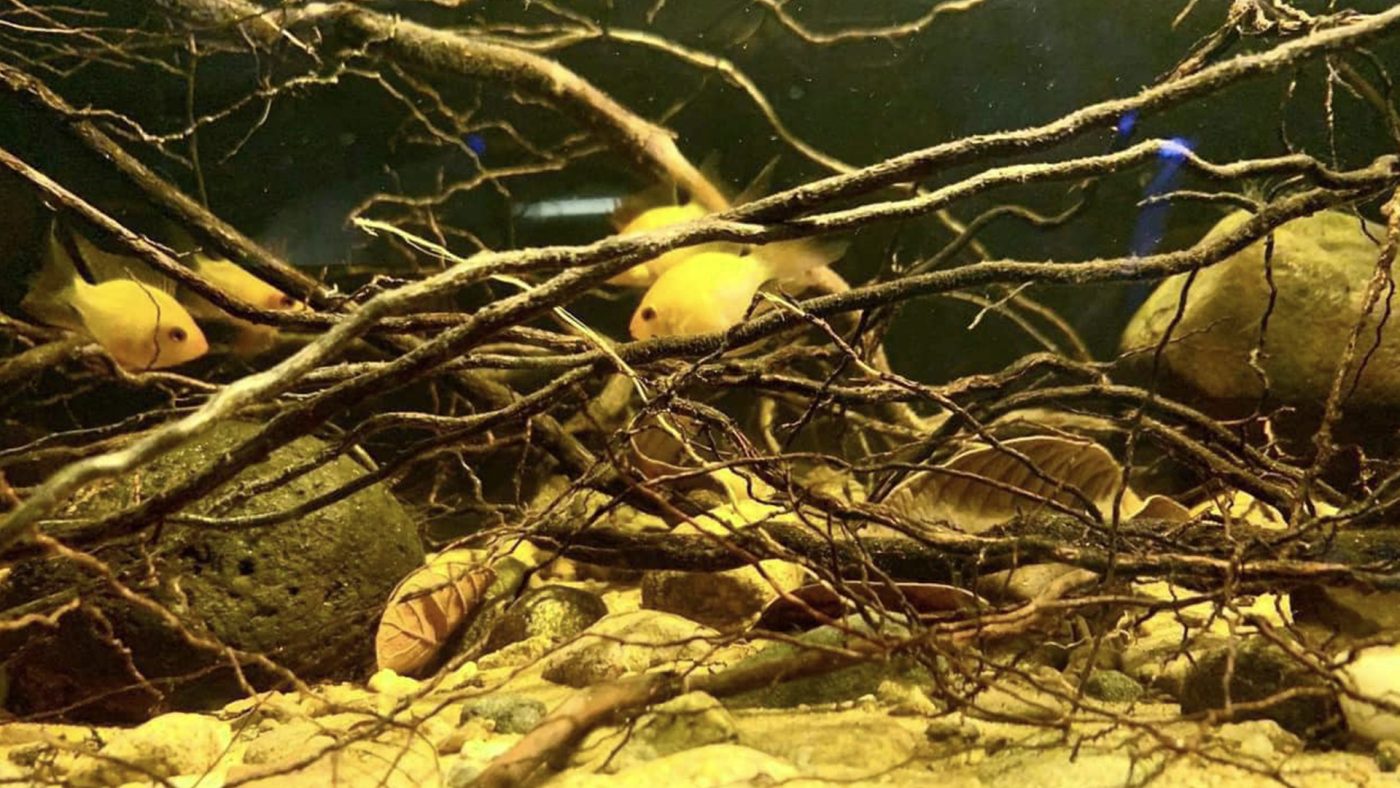
Researching the natural habitat
The first and most crucial step in setting up a biotope aquarium is thorough research. This involves selecting a specific aquatic habitat you wish to replicate and gathering detailed information about its environmental conditions and the flora and fauna that inhabit it.
Key factors to consider:
- Geographic Location: Decide on a specific region, country, or body of water. This decision will guide your subsequent research and species selection.
- Water Parameters: Investigate the natural water chemistry, including temperature, pH, hardness, and other factors that you will need to replicate in your aquarium.
- Substrate and Decor: Identify the type of substrate (sand, gravel, etc.), rocks, driftwood, and other natural elements found in the habitat.
- Native Flora and Fauna: Compile a list of fish, plants, and other aquatic life that occur naturally in the chosen habitat.
Utilizing a variety of resources such as scientific literature, online forums, and firsthand accounts can help you gather a comprehensive understanding of the natural environment. This knowledge is essential for accurately recreating the habitat in your tank.
Setting up your biotope aquarium
Tank selection
When selecting a tank for your biotope aquarium, the size and shape are pivotal considerations. The chosen biotope will largely dictate the tank dimensions and setup. For example, a 10-gallon tank might be suitable for replicating a small, shallow stream but would be inadequate for a more expansive habitat like an African rift lake.
Steps for tank setup:
- Select the Right Tank Size: Ensure the tank size matches the biotope’s needs. Larger tanks offer more stability in maintaining water quality and space for more complex ecosystems.
- Water Preparation: Fill the tank with dechlorinated water at the appropriate temperature for the chosen biotope. This initial step is crucial for the health of your aquatic life.
- Decor and Substrate: Use natural elements that mimic the selected biotope’s substrate and decor. This can include sand, rocks, driftwood, and specific types of plants.
By tailoring the tank and its environment to fit your chosen biotope, you’ll create a habitat that is both visually appealing and nurturing for its inhabitants.
Creating a naturalistic landscape
Creating a naturalistic landscape in your biotope aquarium is akin to painting a living canvas. You start with an empty tank, which you gradually transform into an immersive, hyper-realistic slice of a particular aquatic ecosystem.
Steps to create a naturalistic landscape:
- Select Substrate: Choose a substrate that closely resembles the natural environment. For example, fine sand might be used for an Amazon River basin, whereas a mix of sand and gravel could be ideal for a Southeastern US blackwater stream.
- Hardscaping with Rocks and Wood: Add rocks, driftwood, and other hardscape elements to mimic the natural surroundings. Arrange these materials to create a landscape that offers hiding spots and natural barriers for fish.
- Planting the Aquarium: Introduce aquatic plants native to the selected biotope. Plants should be arranged thoughtfully to simulate the natural growth patterns found in the habitat.
By meticulously planning each element and understanding the natural habitat you’re replicating, you can create a serene and engaging naturalistic landscape that delights both you and your aquarium inhabitants.
Stocking your biotope aquarium
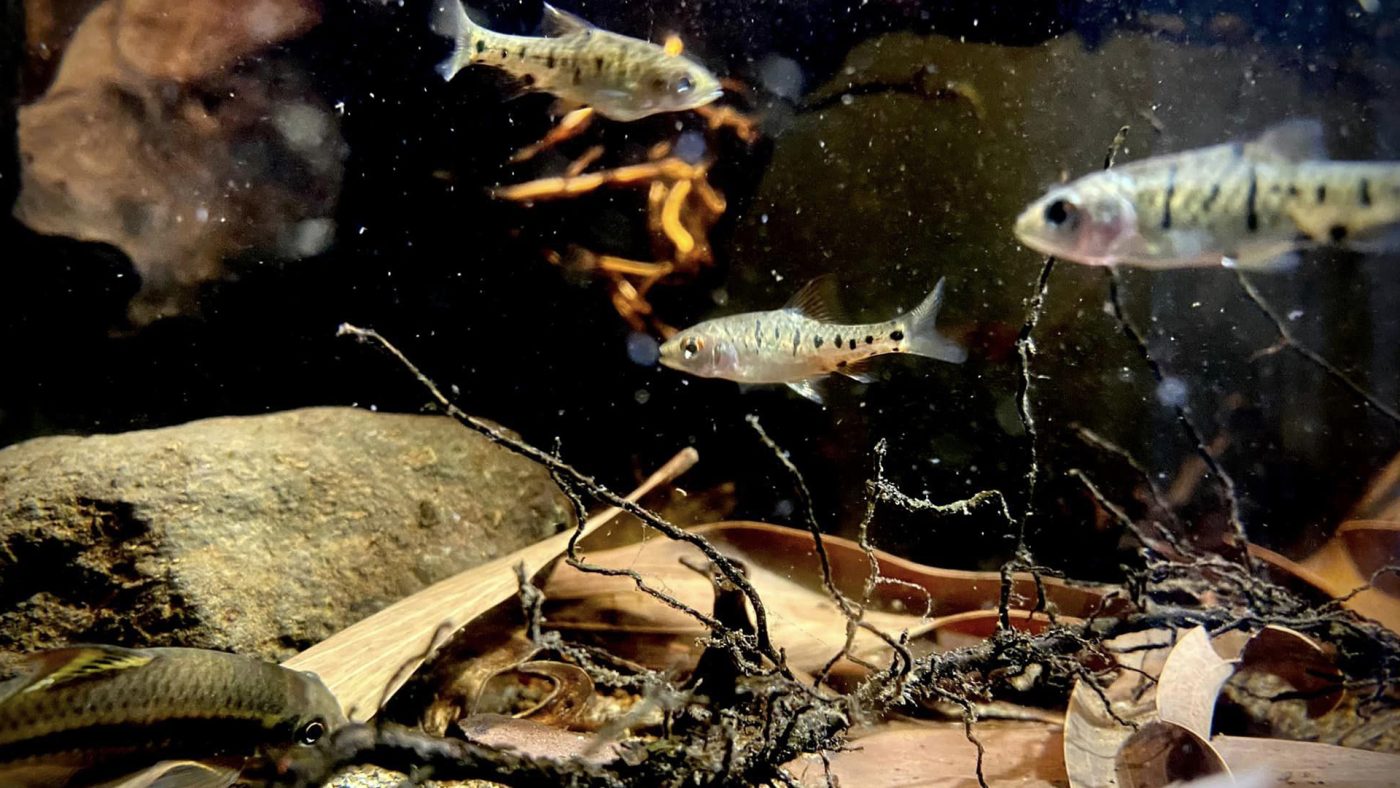
Selecting fish species
Selecting fish species for a biotope aquarium demands careful consideration to ensure compatibility and authenticity. The objective is to choose fish that naturally coexist in the specific habitat you are replicating.
Steps to select fish species:
- Research the Biotope: Understand the natural conditions of the habitat, including the types of fish that live there and their social behaviors.
- Compatibility: Choose species that have similar water parameter requirements and can cohabit peacefully.
- Behavior and Size: Consider the behavior and size of the fish to ensure they will not outcompete or stress each other in the confined space of your aquarium.
Examples:
- Amazon River Biotope: Dwarf cichlids, tetras, and corydoras catfish.
- African Rift Lake Biotope: Mbuna cichlids and haplochromine cichlids.
- Southeast Asian Stream Biotope: Gouramis, rasboras, and loaches.
Proper fish selection is crucial for creating a healthy, harmonious biotope and preventing issues such as overpopulation or aggression.
Introducing fish to the aquarium
Introducing fish to a biotope aquarium requires a systematic acclimation process to minimize stress and ensure a smooth transition to their new home.
Steps for fish acclimation:
- Float the Bag: Allow the bag containing the fish to float in the aquarium for 15-30 minutes to equalize the temperature.
- Slow Release: Gradually mix some aquarium water into the bag over the course of 45 minutes to an hour.
- Gently Introduce: Carefully release the fish into the aquarium, avoiding dumping all at once.
Acclimation Tips:
- Observe Closely: After introduction, watch the fish closely for any signs of stress or disease.
- Introduce Gradually: It’s often best to add fish in small groups rather than all at once to minimize the impact on the established ecosystem.
Adhering to a proper acclimation process not only helps the fish adjust but also ensures the long-term health and stability of your biotope aquarium.
Maintaining your biotope aquarium
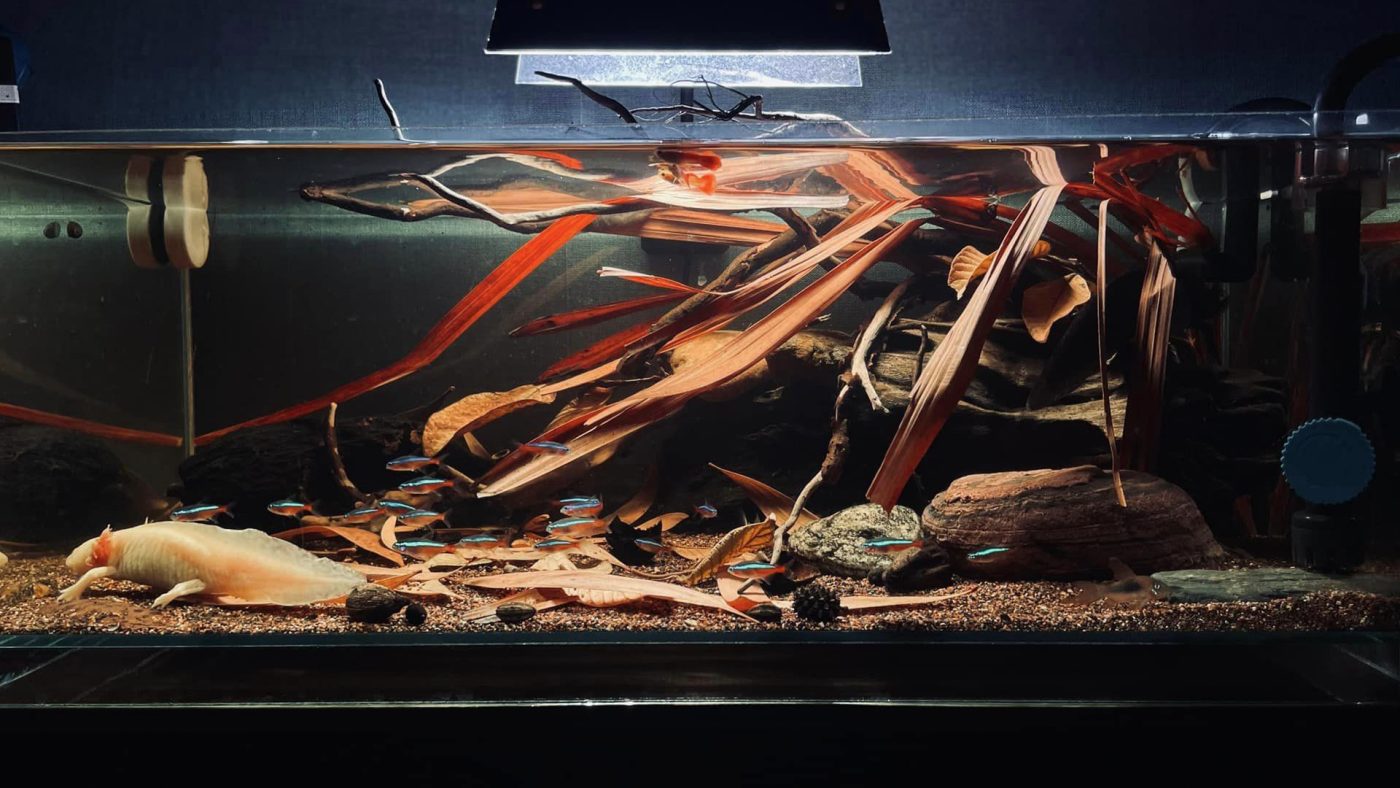
Water quality management
Maintaining water quality is the cornerstone of a thriving biotope aquarium. Ensuring the water parameters match the natural habitat of the species you have chosen is critical for their health and wellbeing.
Key aspects of water quality management:
- Regular Testing: Monitor pH, temperature, hardness, and other water parameters using high-quality test kits.
- Filtration: Use appropriate filtration methods. For instance, peat filtration can be used for creating acidic, soft water conditions in a Southeast Asian blackwater biotope.
- Water Changes: Perform regular water changes to maintain pristine conditions. A typical recommendation is a 10-20% water change weekly.
Proper water quality management involves continuously adjusting and maintaining these parameters to ensure they stay within the optimal range for the biotope.
Plant care and maintenance
Plants play a crucial role in maintaining the ecological balance of a biotope aquarium. Regular care and maintenance are essential for keeping the plants healthy and vibrant.
Plant Care Tips:
- Prune Regularly: Trim overgrown plants to prevent overshadowing and promote healthier growth.
- Fertilization: Use plant-specific fertilizers and avoid over-fertilizing to prevent algal blooms.
- Water Changes: Regular water changes help replenish essential nutrients for plant growth.
- Monitor growth: Adjust lighting and nutrient levels as needed based on plant growth and health.
Consistently caring for your aquatic plants will not only enhance the visual appeal of your biotope aquarium but also contribute to the overall health of the ecosystem.
Observing and enjoying your biotope aquarium
Once your biotope aquarium is set up and well-maintained, the most rewarding part is observing and enjoying it.
Enjoyment and Observation Tips:
- Daily Monitoring: Spend a few minutes each day observing your tank to catch any early signs of issues.
- Appreciate Natural Behaviors: Watch for natural behaviors such as schooling or territorial displays.
- Educational Value: Use your biotope aquarium as a living learning tool to study aquatic ecosystems and promote conservation awareness.
Concluding Thoughts
Creating and maintaining a biotope aquarium is a deeply fulfilling endeavor that combines art, science, and a love for nature. It offers a captivating visual spectacle and promotes a healthier, more authentic environment for aquatic inhabitants. By following the steps outlined in this guide, you can immerse yourself in the beauty and complexity of a natural aquatic ecosystem, right at home.
Observing and enjoying your biotope aquarium
Once your biotope aquarium is meticulously set up and functioning beautifully, the real joy comes in observing and savoring this little slice of nature. This phase is not just about passive enjoyment but also about active engagement and learning.
Daily Monitoring and Observation
Spending a few minutes each day observing your tank can be incredibly rewarding. It allows you to catch early signs of any issues that may arise, whether it’s a change in water quality, a plant that’s not thriving, or a fish exhibiting stressed behavior.
For instance, you might notice:
- Fish showing signs of territorial behavior.
- The gradual bloom and growth cycle of plants.
- The way fish interact with their environment and each other.
Daily observation sharpens your skills as an aquarist and deepens your understanding of the ecosystem you’ve created.
Appreciating Natural Behaviors
A biotope aquarium provides a unique opportunity to observe natural behaviors that fish may not exhibit in more general, mixed-species tanks. For example, certain fish may exhibit spawning behaviors, schooling values, or specific feeding habits that align with their natural habitats.
Watch for:
- Schooling and Shoaling: Many species, like tetras and rasboras, exhibit schooling behavior that is both fascinating and soothing to watch.
- Territorial Displays: Cichlid species may show their territorial boundaries, creating dynamic and interesting interactions within the tank.
- Feeding Habits: Some fish have unique ways of foraging and eating that are best observed in a habitat that mimics their natural environment.
Appreciating these behaviors provides a more authentic and fulfilling aquarium experience, drawing you closer to the underwater world you have recreated.
Educational Value
Your biotope aquarium is more than just a display; it’s an educational tool. It offers insights into the complexities of aquatic ecosystems, teaching you about biodiversity, inter-species relationships, and environmental balance.
Learning about:
- The specific needs of each species and how they interact within the ecosystem.
- The interplay between water chemistry and living organisms.
- The environmental threats that natural habitats face and how conservation efforts are crucial for their survival.
By observing and engaging with your biotope, you are not just enjoying a hobby but also becoming an advocate for aquatic conservation. Sharing your knowledge and experience with others can inspire them to appreciate and protect natural habitats.
Customizing Your Biotope Aquarium
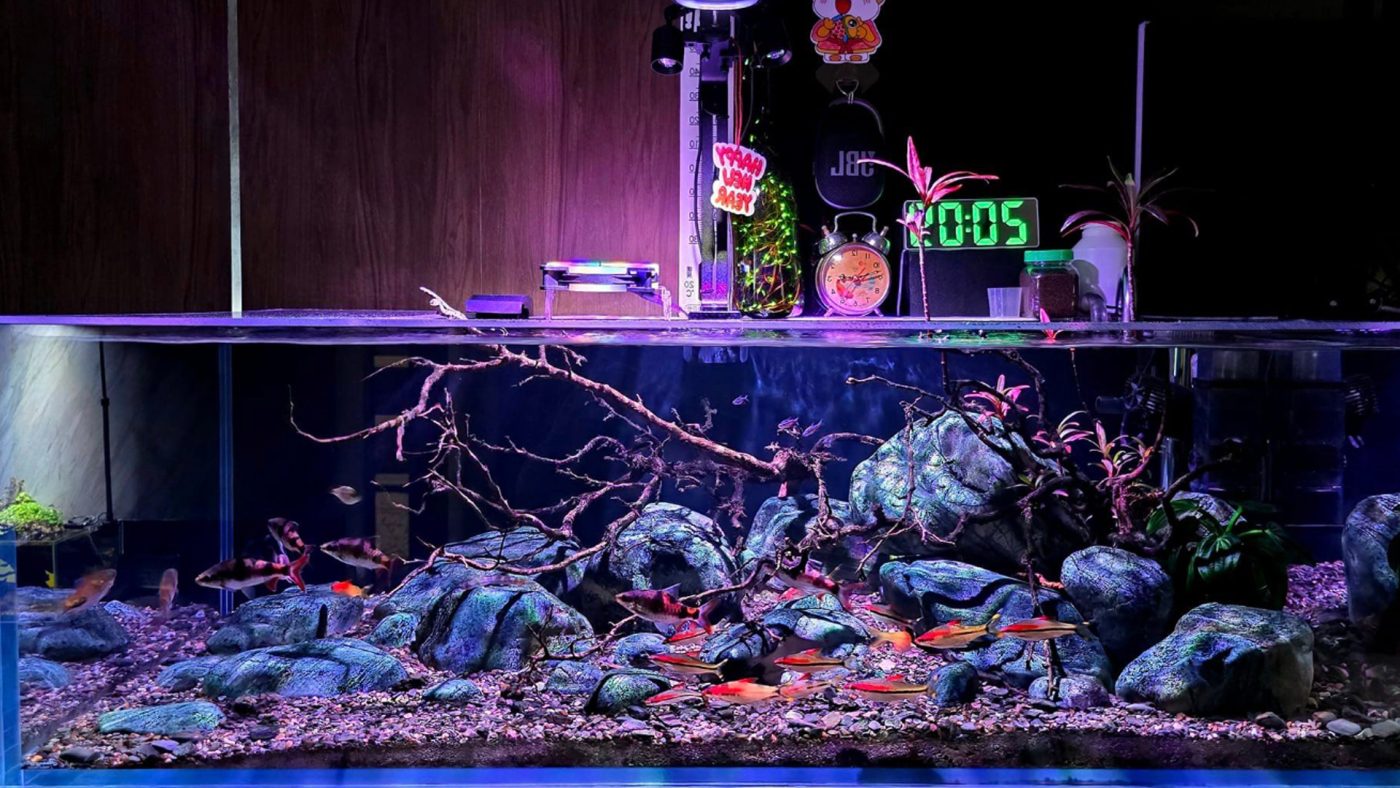
While fidelity to nature is the hallmark of a biotope aquarium, there’s room for personal touches and customizations that still respect the essence of the habitat you’re replicating.
Enhancing Aesthetics
Although the goal is to replicate a specific natural habitat, you can enhance the visual appeal without straying too far from authenticity.
Decorative Elements
Incorporate decorative elements such as:
- Stones and driftwood arranged aesthetically.
- Backgrounds that resemble natural environments, e.g., a photographic backdrop of an Amazon riverbank.
- Subtle LED lighting to create a natural sunlit effect or mimic moonlight for nocturnal viewing.
These enhancements provide a sense of depth and place, making your biotope even more mesmerizing.
Aquascaping Techniques
Consider applying aquascaping techniques like the Golden Ratio or the Rule of Thirds to arrange plants and hardscape elements. This approach can make your tank more visually balanced and pleasing while remaining true to the natural layout.
Advanced Techniques
For those who want to take their biotope to the next level, advanced techniques such as CO2 injection for plant growth or automated water parameter adjustments can be incorporated.
High-Tech Solutions
Automated Systems:
- CO2 Injection: Boosts plant growth, mimicking lush underwater forests found in certain biotopes.
- Automated Filtration and Heating Systems: Maintain stable water conditions with minimal manual intervention.
- Digital Monitoring Tools: Use sensors and apps to keep a real-time check on water quality parameters.
Investing in high-tech equipment may require a higher upfront cost but offers long-term benefits in terms of maintenance ease and ecosystem stability.
Integrating Biodiversity
While your primary focus is on specific fish and plants, consider integrating other forms of biodiversity to make your ecosystem more robust and engaging.
Small Invertebrates
Adding small invertebrates such as:
- Shrimp: Various species like Cherry Shrimp or Amano Shrimp, which can help with algae control.
- Snails: Species like Nerite or Malaysian Trumpet Snails that contribute to the tank’s cleanliness.
- Microfauna: Tiny organisms such as copepods that can become an essential part of the food web.
These additions not only enhance the ecological balance but also provide more points of interest for observation.
Case Studies and Examples
To inspire your biotope aquarium journey, let’s delve into some specific examples and case studies showcasing different regions and ecosystems.
Amazon River Basin Biotope
Characteristics:
- Water Parameters: Soft, acidic water (pH 6.0-7.0), warm temperatures (24-28°C / 75-82°F).
- Substrate: Sandy or fine gravel, with leaf litter.
- Décor: Driftwood, submerged branches, and river stones.
- Plants: Echinodorus species, Amazon Swords, floating plants like Salvinia.
- Fish: Discus, Cardinal Tetras, Corydoras Catfish, and Angelfish.
Visual Appeal:
This biotope creates a lush, shaded environment reminiscent of a tropical jungle, with dappled light filtering through dense foliage.
African Rift Lake Biotope
Characteristics:
- Water Parameters: Hard, alkaline water (pH 7.8-8.6), warm temperatures (24-27°C / 75-81°F).
- Substrate: Rocky with fine sand.
- Décor: Rock formations, caves, minimal plant life.
- Fish: Mbuna Cichlids like Pseudotropheus, and Peacocks (Aulonocara species).
Visual Appeal:
This biotope replicates the clear waters and rocky landscapes of African lakes, with brightly colored cichlids offering a dynamic and vibrant display.
Southeast Asian Stream Biotope
Characteristics:
- Water Parameters: Soft, slightly acidic water (pH 6.5-7.2), moderate temperatures (22-26°C / 72-79°F).
- Substrate: Sandy with leaf litter.
- Décor: Driftwood, fallen branches, stones.
- Plants: Cryptocoryne species, Java Ferns, and Anubias.
- Fish: Betta species, Rasboras, and Gouramis.
Visual Appeal:
This biotope captures the tranquil beauty of a shaded, slow-moving stream, providing a peaceful and rhythmic underwater landscape.
Troubleshooting Common Issues
Biotope aquariums, like any living system, can encounter problems. Here’s a quick guide to troubleshooting common issues:
Algae Growth
Causes:
- Excessive light.
- Over-fertilization.
- Poor water quality.
Solutions:
- Reduce lighting duration or intensity.
- Balance nutrient levels.
- Introduce algae eaters like certain shrimp or snails.
Water Parameter Fluctuations
Causes:
- Inconsistent water changes.
- Incorrect water chemistry.
Solutions:
- Maintain a regular water change schedule.
- Use water conditioners to stabilize pH, hardness, and other parameters.
Fish Stress or Illness
Causes:
- Incompatible species.
- Poor water quality.
- Inadequate nutrition.
Solutions:
- Research compatibility and adjust stocking.
- Regularly test and maintain water parameters.
- Provide a varied and balanced diet.
Plant Issues
Causes:
- Poor lighting.
- Lack of nutrients.
- Inappropriate water parameters.
Solutions:
- Ensure adequate lighting specific to plant needs.
- Use appropriate fertilizers.
- Adjust water parameters as required.
Conclusion
Creating a biotope aquarium is a journey that goes beyond simply setting up a fish tank. It involves a deep respect for nature, an understanding of ecosystems, and a commitment to replicating those environments as accurately as possible. From researching your chosen habitat to selecting the right tank, stocking it with compatible species, and maintaining the delicate balance of water quality and plant health, every step is an exploration and a learning experience.
Final Thoughts
Entering the world of biotope aquariums allows you to become a curator of nature, bringing a small but vivid part of the natural world into your home. The beauty, authenticity, and educational value of a well-crafted biotope aquarium can provide endless hours of enjoyment, not just for you, but for everyone who sees it.
Call to Action
If you’ve been inspired to start your own biotope aquarium, remember that the journey is just as rewarding as the destination. With the right knowledge, planning, and care, you can create a stunning and authentic aquatic environment that will be a source of pride and joy for years to come. Whether you’re a seasoned aquarist or a newcomer, there’s always something new to learn and appreciate in this fascinating realm. Dive in, and let the adventure begin!

